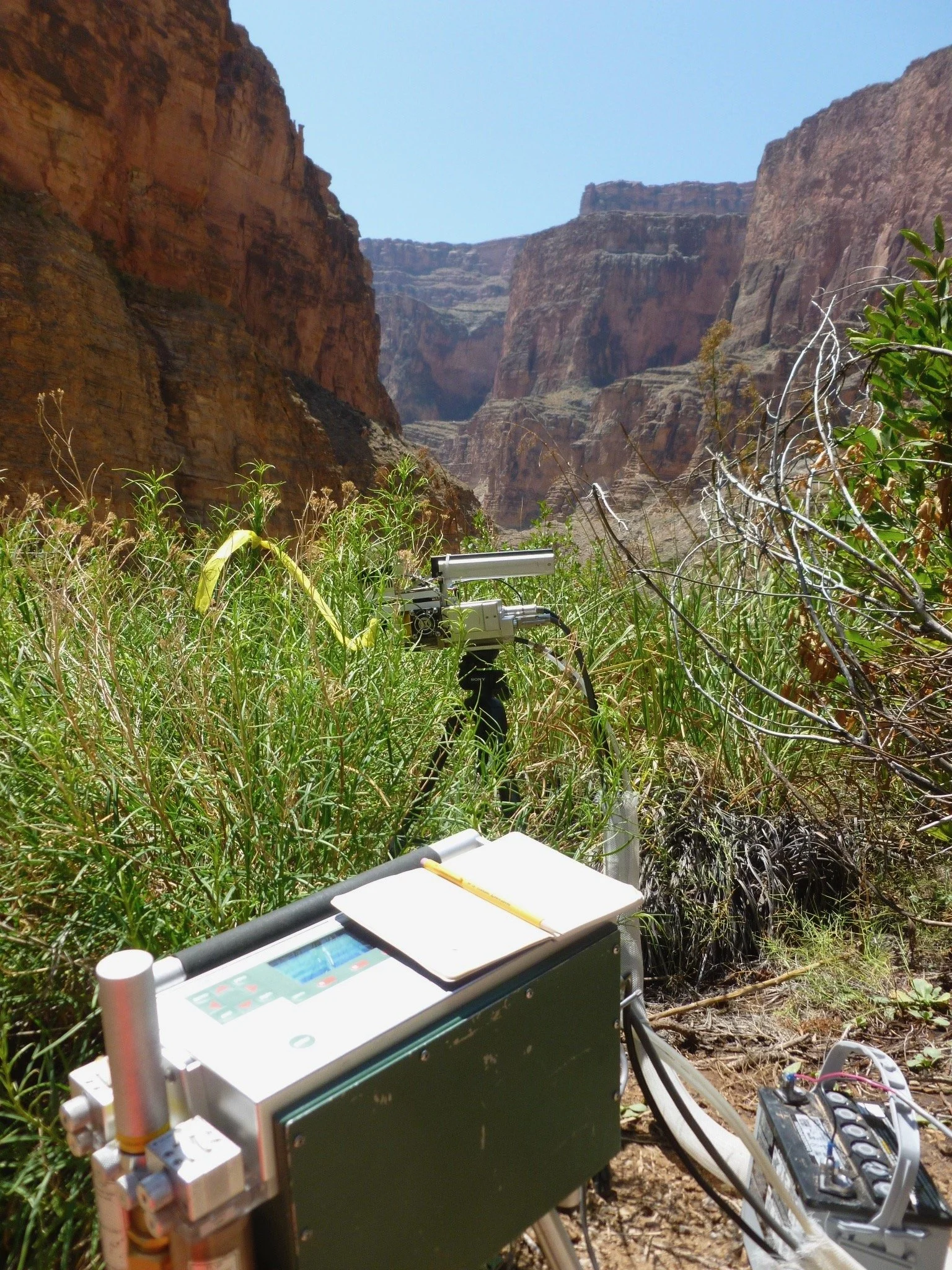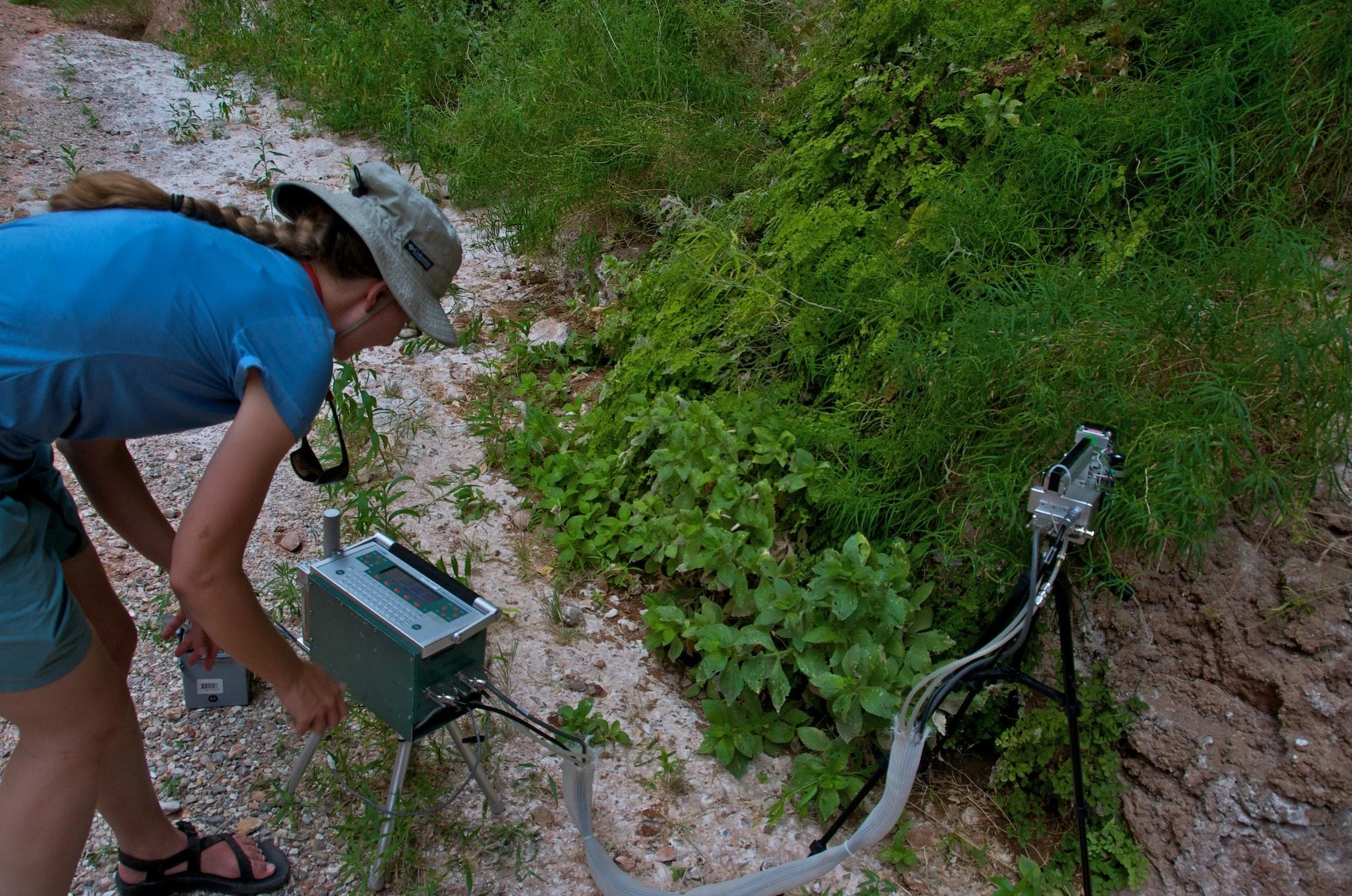C3 photosynthesis
Motivation: From my graduate studies up to present, I have been working to understand photosynthesis. Over the years, I have focused on multiple aspects of this topic and undertaken projects involving field observations, instrument development, laboratory experiments, and mathematical modeling. These cumulative investments have come together in the paper described on this page [J. E. Johnson and J. A. Berry. 2021. Photosynthesis Research 148: 101-136].
Background: In this paper, I ask the question: What controls how the overall photosynthetic process responds to light? I grew interested in this question during my graduate studies, when I was trying to understand photosynthesis in plants adapted to extreme environments. At that time, the conventional approach for analysis of light response measurements was based on empirical functions. While these functions could be fit to my measurements, they were unsatisfying to me because they didn’t provide insight into how the photosynthetic light response actually works.
Approach: To tackle this question, I developed new experimental methods, applied them in laboratory studies, and worked out the relationship between the dynamics of photosynthesis in intact leaves and the biochemical properties of a cryptic enzyme called the Cytochrome b6f complex (Cyt b6f). My key insight was that Cyt b6f controls light-limited photosynthesis in a way that is analogous to how Rubisco controls light-saturated photosynthesis. This allowed me to formulate a new model of the light response that is unique in that it is fully mechanistic, yet still has a simple structure.
The full story, and its significance
Full story: The details of this study can be found in the following reference:
Citation: J. E. Johnson and J. A. Berry. 2021. The role of Cytochrome b6f in the control of steady-state photosynthesis: a conceptual and quantitative model. Photosynthesis Research 148: 101-136
Article DOI: 10.1007/s11120-021-00840-4
Original code DOI: 10.5281/zenodo.4759246
Living code repository: Example simulations on GitHub (Octave/MATLAB)
Media coverage: Carnegie Annual Report, News release on Phys.org & Twitter thread
Significance: This model can replace the empirical models of the light response that have been used in areas ranging from plant physiology to remote sensing. It creates a range of exciting new opportunities for studying and simulating photosynthesis across scales.












